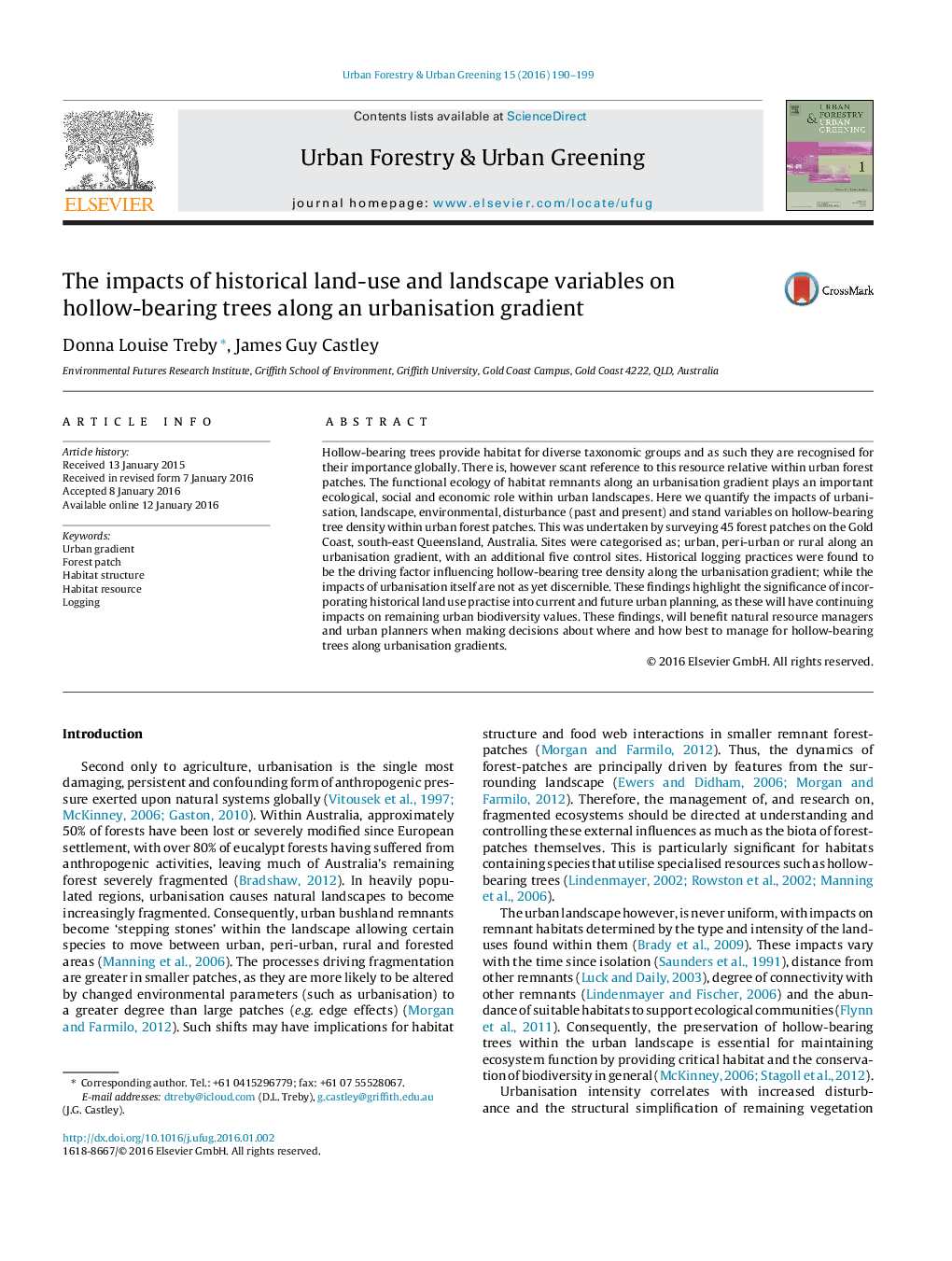| Article ID | Journal | Published Year | Pages | File Type |
|---|---|---|---|---|
| 93983 | Urban Forestry & Urban Greening | 2016 | 10 Pages |
•Historical land-use practices are driving hollow-bearing tree density.•Hollow type was not influenced by the urbanisation gradient.•The effects of the urbanisation gradient are masked by historical land-use practices.
Hollow-bearing trees provide habitat for diverse taxonomic groups and as such they are recognised for their importance globally. There is, however scant reference to this resource relative within urban forest patches. The functional ecology of habitat remnants along an urbanisation gradient plays an important ecological, social and economic role within urban landscapes. Here we quantify the impacts of urbanisation, landscape, environmental, disturbance (past and present) and stand variables on hollow-bearing tree density within urban forest patches. This was undertaken by surveying 45 forest patches on the Gold Coast, south-east Queensland, Australia. Sites were categorised as; urban, peri-urban or rural along an urbanisation gradient, with an additional five control sites. Historical logging practices were found to be the driving factor influencing hollow-bearing tree density along the urbanisation gradient; while the impacts of urbanisation itself are not as yet discernible. These findings highlight the significance of incorporating historical land use practise into current and future urban planning, as these will have continuing impacts on remaining urban biodiversity values. These findings, will benefit natural resource managers and urban planners when making decisions about where and how best to manage for hollow-bearing trees along urbanisation gradients.
